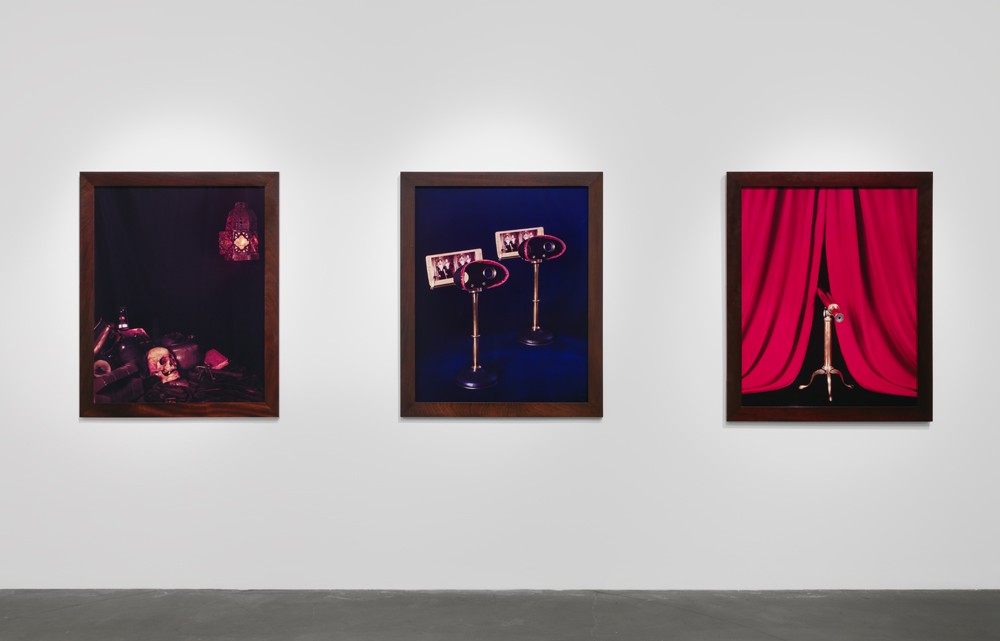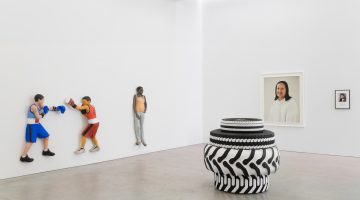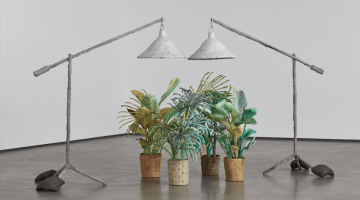Sarah Charlesworth: Doubleworld
June 24 – September 20, 2015
New Museum
235 Bowery, New York, NY 10002
“Doing someone [or ‘something’] justice” is an expression that’s casually thrown around in the contemporary lexicon. A picture of a person, a conversation about their character, or a memory of someone’s legacy is constantly begging for a truthful representation of the good works they had achieved. For those who knew photographer Sarah Charlesworth, it’s possible that the first comprehensive retrospective following her death in 2013 would “do her justice” as a person. But it’s indisputable that said exhibition, entitled Doubleworld, has done her justice as an artist.
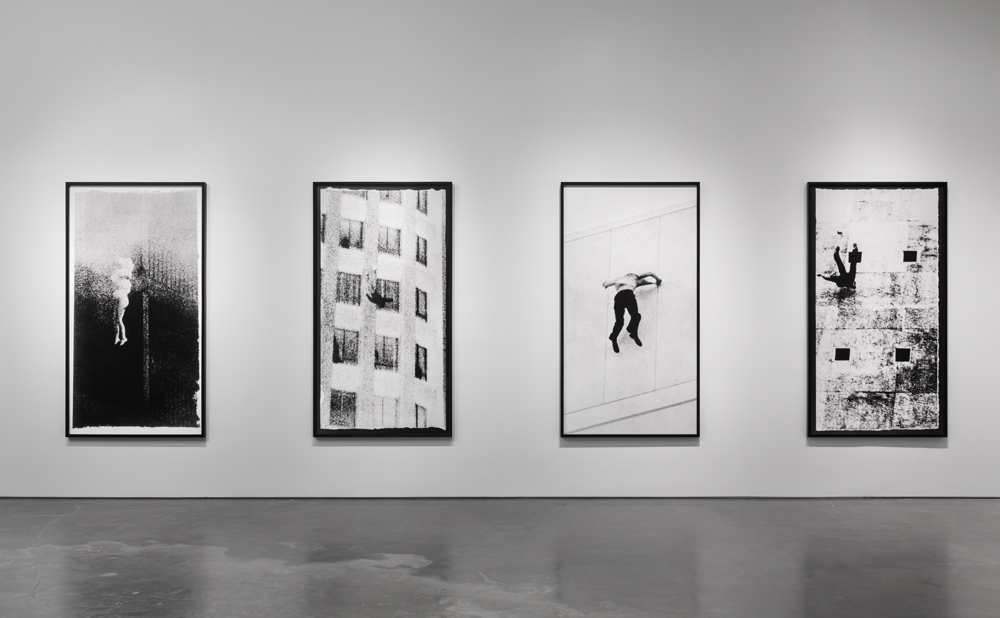
“Sarah Charlesworth: Doubleworld,” New Museum, New York. Installation view. Courtesy New Museum, New York. Photo: Maris Hutchinson/EPW
The setup for Doubleworld on the second floor of the New Museum is not particularly adventurous or groundbreaking, and this is a good thing. Each room is dedicated to a singular series within Charlesworth’s 40-year practice, and every photograph within a series is uniform in dimension. Her interest in penetrating the boundaries between photography and reality is given a simple, clean foundation. As early as 1991, the background colors in works within groupings such as 0+1, Available Light, and Renaissance Paintings and Drawings are even given matching frames. Akin to peers such as Baldessari, Kruger, Sherman, and Prince, Charlesworth forces her photographs to perform in place of language. Possibly the most successful utterances come from Stills (1980), consisting of newsprint images (enlarged to plus-life-size) documenting a man or woman’s fall from a tall building. All traces of narrative, motive, and resolution are eliminated as each figure variously hovers, plummets, or floats. The primal, perpetual human desire to fly is shattered when confronted with imagery suggesting that flight is followed soon after by death. Whether the fall is initiated purposefully or accidentally, Charlesworth’s viewers immediately come into searing, intimate contact with a theatrical event that has the potential to include or dispatch them. These images are simultaneously funny and frightening; the cinematic gag of falling from a rooftop is usually cradled by some sort of comedic outcome, as the audience gets a tinge of schadenfreude watching the actor experience the inevitable result of their half-baked stunt. In Charlesworth’s photographs, however, the looming verticals of black and white communicate little else beyond the potency of mortality and the fragile body in tandem.
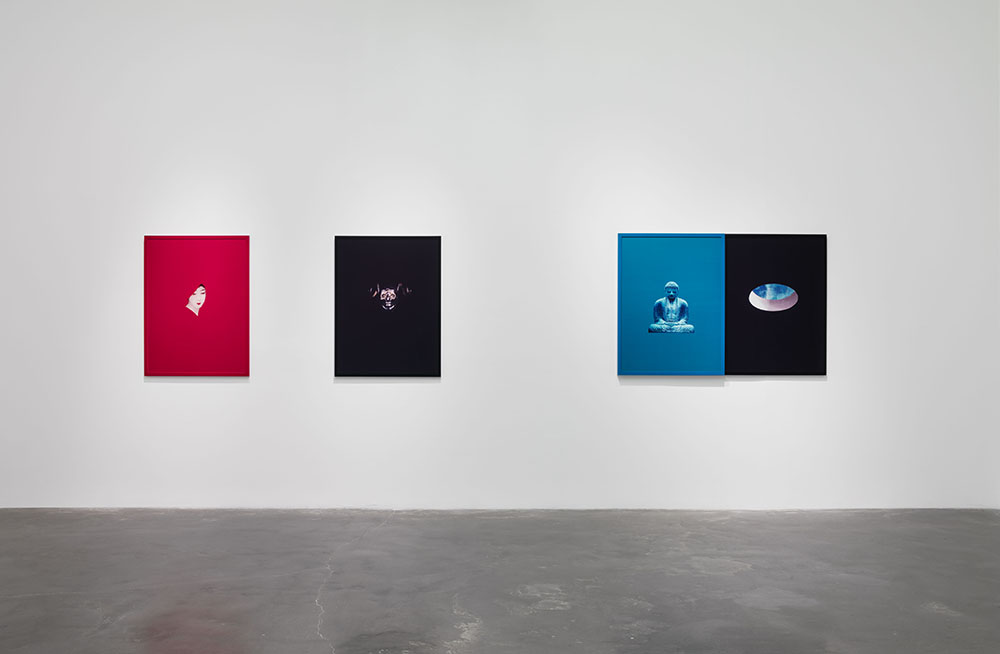
“Sarah Charlesworth: Doubleworld,” New Museum, New York. Installation view. Courtesy New Museum, New York. Photo: Maris Hutchinson/EPW
Her series Objects of Desire (1983-1988) are carefully extracted images of statues, bowls, masks, and talismans, isolated in a dense, solid color field. Again, Charlesworth eliminates all possibility of a narrative sourced from typical, historical timelines or perspectives. The psychiatrist’s exercise of choice or free association, is fully functional here. A geisha’s face is, in reality, that of a male actor in drag. A gilded bowl (seemingly to scale) sits beside a shining Ionian column (miniaturized to fit within a similar compositional frame). A Buddha in meditation is paired with a dark space pierced by a circle revealing the blue sky outside of it. In every one of these images, the chosen object is regarded for nothing more or less than as it appears. It is, quite succinctly, Saussure’s “sign-signifier” manifested for public observation. Her skill with a camera conveyed nothing novel or revolutionary; Charlesworth was not the first to extricate journalistic or scholarly images from their textual borders. What is unique in her work, though, is a respectful fascination with each object or subject she considers. There appears to be no subversively voyeuristic or intrusive intent, as her contemporaries Philip Lorca diCorcia and Richard Prince have demonstrated. Rather, Charlesworth’s imagery is as placid as if the things, themselves, were mounted on plinths in their very own special exhibition.
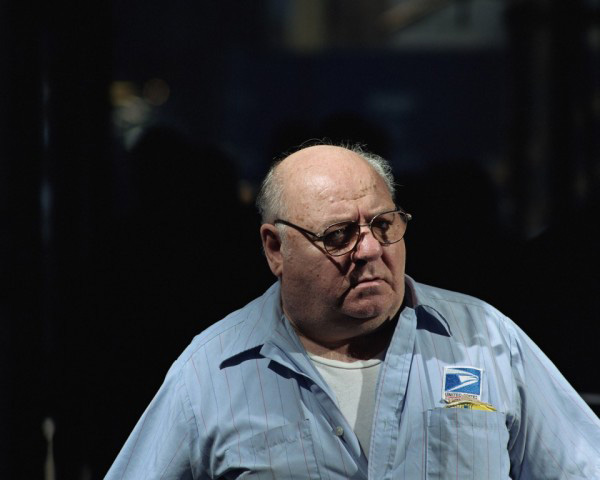
Philip-Lorca diCorcia. “Head #9,” 2001, from the Heads series. Fujicolor Crystal Archive print. 48 x 60 inches (121.9 x 152.4 cm). Courtesy of the artist and David Zwirner, New York/London. Copyright Philip Lorca diCorcia
Four series within Doubleworld (Objects of Desire, 0+1, Available Light, and Figure Drawings) all include an image of Buddha seated in meditation. Perhaps those familiar things that Buddha represents, such as enlightenment and an insistence on introspective meditation to heighten one’s sense of being, were anchors within Sarah Charlesworth’s life as an artist. It would certainly seem likely, with each and every one of her photographs possessing a state of self-confident awareness; death, wealth, class, power, nature, and space are all harnessed in a succession of squares and rectangles. Charlesworth’s legacy is far from being honed down to its sharp edges: It is still fresh and warrants significant critical attention from writers, curators, other artists, and viewers, alike. With this definitive exhibition, Sarah Charlesworth is a step closer to the thoughtful, whole-hearted recognition she was only partially afforded during her lifetime.
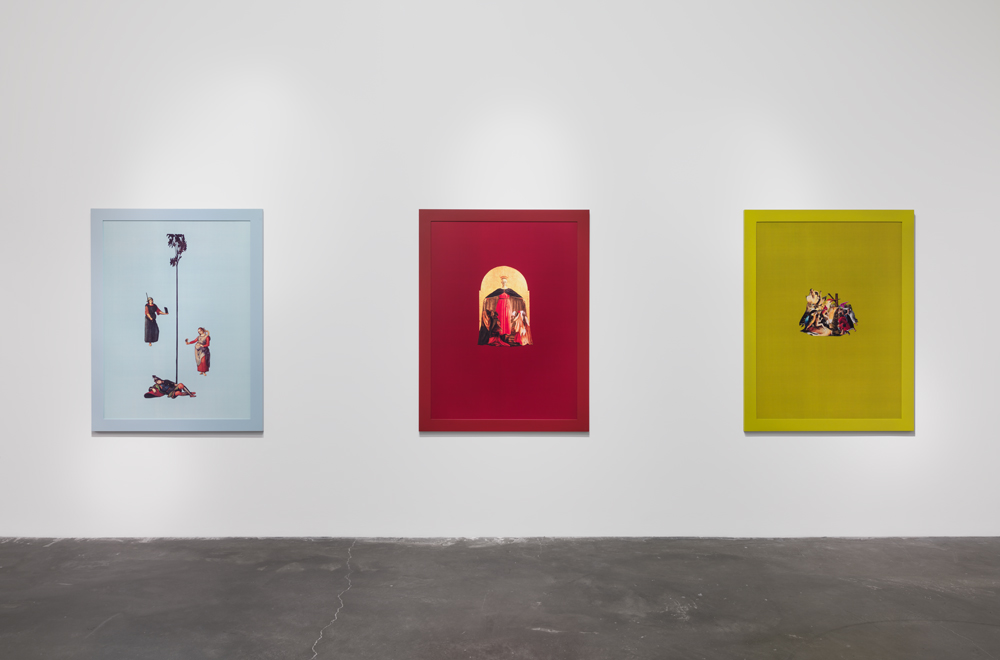
“Sarah Charlesworth: Doubleworld,” New Museum, New York. Installation view. Courtesy New Museum, New York. Photo: Maris Hutchinson/EPW
